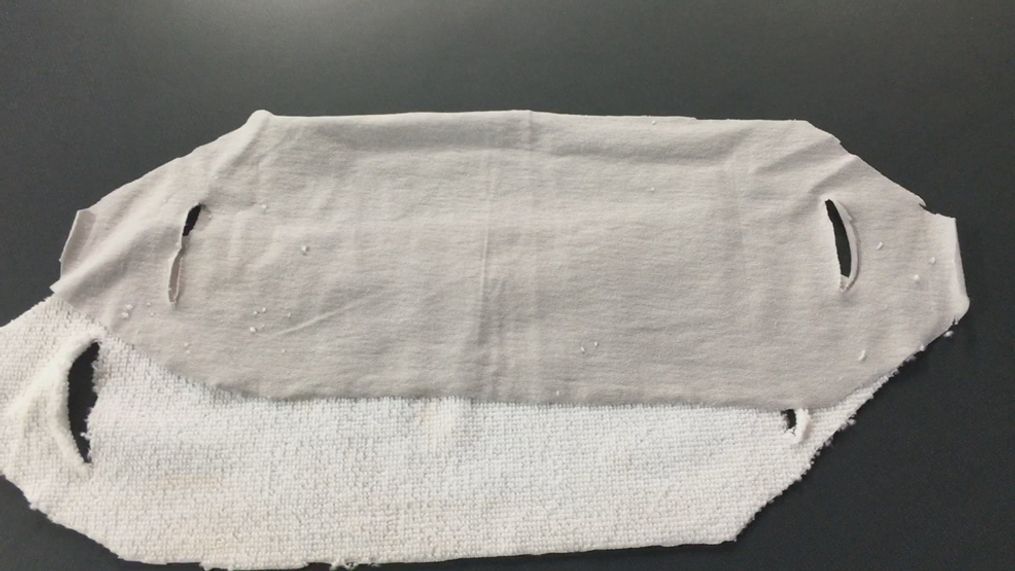Here's how to make an easy, no-sew face mask with materials you have at home

SEATTLE (KOMO) – A month ago, wearing a face mask to the grocery store wasn’t even on the radar for most of us.
Now, more and more people are making their own masks to wear out in public because of COVID-19.
But how do you make a mask if you can't sew, don't have a sewing machine and don't have access to the supplies?
Ear, Nose and Throat Surgeon Shawn Nasseri says the key to DYI masks is layers and fit. You need at least two layers, three is even better. The different layers help block airborne particles, and the type of material you use makes a difference.
Nasseri said the outside layer of your mask should be a thicker tightly woven fabric and many items you have at home can fit the bill.
"Like a solid microfiber, a kitchen tea towel, a kitchen cleaning towel that's again, laundered and completely clean," Nasseri said.
In addition to solid microfiber and tea towels, you can use the fabric from an old polyester polo shirt or, Nasseri said, even an old swimsuit. The inside layer that will go against your face should be soft 100% cotton.
"If you can, use like, a T-shirt material, and undershirt material, anything that's a sheer layer that's pretty much all cotton," Nasseri said. "Not anything that's got nylon or a blend, because your face will react over time."
In addition to cotton T-shirts or undershirts, you can use an all cotton button down shirt. And if you don't sew, Nasseri said skip the attached ear loops.
"You don't need to go this complicated," Nasseri said.
Instead of a rectangle that measures from one cheek to the other with each end attached to elastic strips, make the whole thing fabric. Measure one long rectangle from ear to ear and taper each end off to a slight point. Be sure to cut all layers the exact same size. Then, simply cut a slit through every later where the fabric hits the base of your ear. Stick your ear through the slit, and move the remaining fabric behind your ear. You have a mask.
Nasseri said adding a third layer of fabric in the middle or outside can provide extra filtration. Just make sure the mask fits firmly over your nose and under your chin. And it's important to machine wash the masks after every use. Hand washing is not only less effective at cleaning, it leaves soapy residue that can cause irritation.
And for those of you inclined to add a vacuum HEPA filter to your DIY mask, Nasseri advises against it.
"Be really cautious, because especially the ones in vacuum cleaners and vacuum bags, are chemically treated on the outside, so as you breathe through, you're going to get specific chemicals," Nasseri said. "And those are chemicals you don't want to be breathing up against your face for several hours. So please, don't do that."
Keep in mind, DIY masks will not work the same against this virus as the N95 masks we need to save for the medical teams and first responders who desperately need them for protection as they work to save lives.
But doctors said they do help reduce our exposure during those limited trips to the pharmacy or grocery store.














